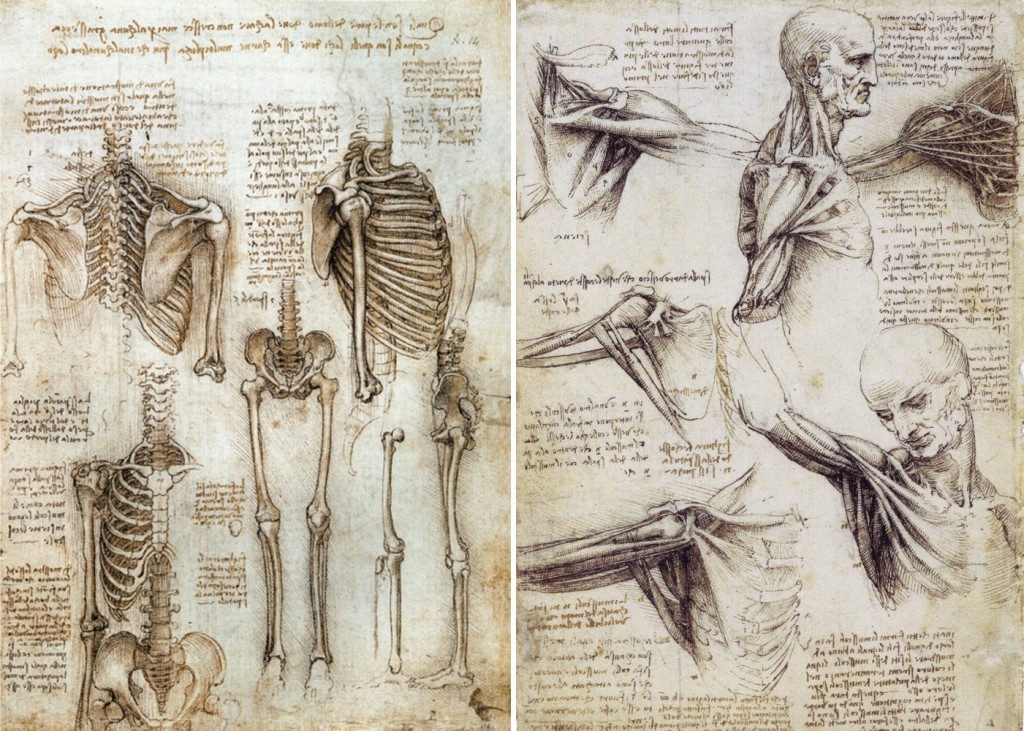The urge to depict, and thus to better understand the body, has always been with us. From the caves at Lascaux in France to Leonardo da Vinci’s folios to the medical illustrations of anatomist Andreas Vesalius — the history of medicine has always included the urge to portray the human body and its many mysteries.
Early Origins
Even at a time when it was frowned upon, dedicated early “explorers” of the human body, such as da Vinci, delved into the tangled intricacies of human anatomy and physiology through careful autopsy and subsequent renderings of the findings. Da Vinci rejected centuries of supposition and superstition and opted, instead, for careful examination and dispassionate rendering of his discoveries. As one of the greatest artists of the ages, his drawings of the human body shimmer, to this day, with intelligence, beauty, insight and precision.
Da Vinci yearned to better understand the underlying “architecture” of the body. He originally undertook dissection to better depict the body’s exterior in motion. Though his quest ultimately proceeded from investigations of the external musculature and the mechanics of bones and their articulations, to careful examination of everything from blood vessels to individual nerves. Some of his revelations were not “discovered” again for centuries to come.
That’s unfortunate. His elegant drawings could easily have advanced Renaissance medical knowledge at a time when most “physicians” based their practice on ancient studies of various animals. Essentially, doctors were stifled by a lack of accurate, basic anatomical knowledge — and their patients suffered for it.
Modern Uses
Fortunately, today’s medical community struggles under no such burden of misinformation. Our knowledge of the human body has improved dramatically, but our need for medical illustration is still as great as ever. To this day, doctors and their patients benefit from accurate, detailed renderings of the body.
Sophisticated computer imaging technology has enabled the creation of 3D medical animations that delve deep into the body, exposing its secrets and facilitating the training of doctors and their patients alike. Medical animation is an important tool that can be used to advance medical education.
Whether it’s for training purposes in medical school — or for marketing purposes among medical device makers demonstrating the benefits of their products in action in the body, or simply to facilitate patient education — medical animation can illuminate complex concepts and procedures quickly and efficiently.
From Macro to Micro — and Beyond
Modern 3D medical animations are routinely used to explain everything from complicated surgical procedures to the mechanisms of action of pharmaceuticals. They can depict any procedure or activity; from simple invasive tests to complex surgical repairs to post-operative care and rehabilitation.
Medical animation easily ventures where the human eye cannot normally travel. Increasingly, animations are being used to illustrate microscopic and even sub-microscopic processes at the sub-cellular level. Indeed, some users have taken to calling this subset of medical animation “molecular animation.”
Educators praise 3D animation as an important tool that can be harnessed to teach difficult cellular and molecular processes, which necessarily unfold in multiple dimensions. As noted in an article published in Cell Biology, in 2005, examples abound. They include: “transcription, translation, bacterial gene expression, messenger RNA (mRNA) processing, mRNA splicing, protein transport into an organelle, the electron transport chain, and the use of a biological gradient to drive adenosine triphosphate synthesis,” among others.
Enhanced Education
Research suggests that learning is more effective when it is enriched through the use of medical animations in the classroom. Students retain significantly more information when animations are added to traditional lectures.
In the patient-education arena, brief medical animation “clips” are increasingly common in doctor’s offices, hospitals and even on television shows. Depending on the intended audience, animations can be tailored to highly educated medical professionals, or simplified to inform the average patient with no advanced knowledge. They’re even used to provide informed consent before starting medical procedures.
Of course, the beauty of medical illustration and medical animation is that it is far easier to convey potentially challenging information through carefully selected images than with words. A picture may be worth a thousand words, but 3D medical animations allow you to combine the two seamlessly, for even greater impact.



